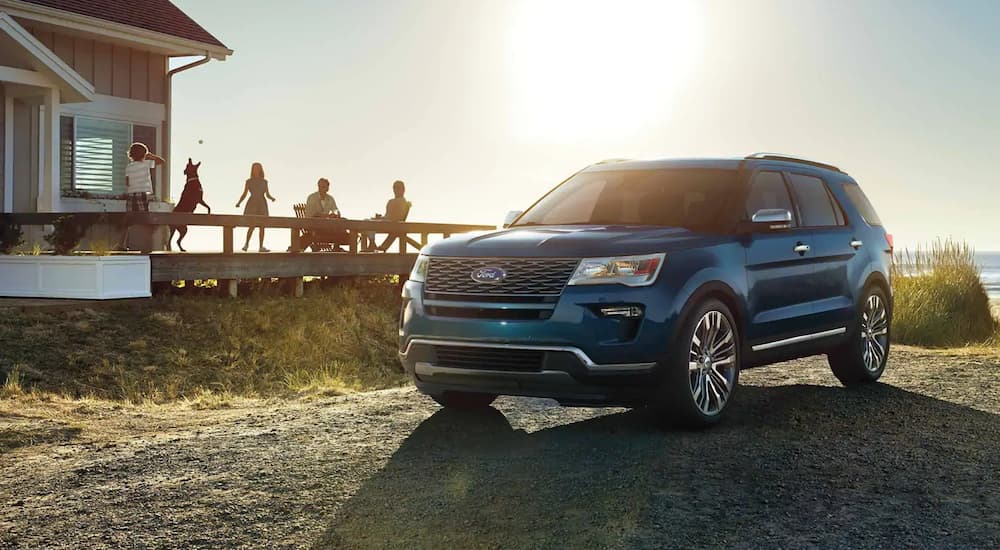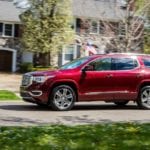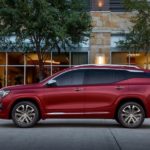If you’re in the market for an affordable midsize SUV, the prices can be a bit overwhelming. This particular market segment offers lots of makes and models with a dizzying array of features and options. All of these details must be weighed carefully to determine which SUV is going to be right for you. Two of the most popular models available are the Ford Explorer and the Honda Pilot. Both vehicles offer a whole host of similarities, but also differ in various ways as well. Let’s take a closer look at the 2019 Ford Explorer vs 2019 Honda Pilot to compare them so you can make the most informed decision.
How much you’ll be shelling out
The starting prices for both vehicles are similar, although the Pilot’s starting price for the base model of $31,450 edges out the Explorer’s base model which comes in at $32,365. And as far as added value goes, the base Pilot includes several features standard that aren’t present on the entry-level Explorer, such as cruise control and forward collision and lane departure warning systems. If you decide to go with the all-wheel drive options for either vehicle, be prepared to add $2,150 to the price of the Explorer and $1,900 to the Pilot. For buyers looking to go beyond the base models, Ford offers an additional four trim levels, topping out with the Platinum at a price of $54,165. Honda’s offerings for the Pilot also include an additional four trim levels, with the highest being the Elite, priced at $48,020.
Power and performance
The Explorer comes standard with a 290 horsepower V6 engine, but also offers an available 280 horsepower four-cylinder turbo. In its upper two trim levels, a third option is available – a twin turbo V6 pumping out 365 horsepower. In contrast, the Pilot uses the same engine across all its models, a 280 horsepower V6. Both vehicles come standard with a six-speed automatic transmission. The Pilot also offers the option of a nine-speed automatic.
Fuel economy
Related to performance, both vehicles perform similarly when it comes to getting the best value from your gas dollar. For the base models on each, the Explorer comes in at 17 mpg city and 24 mpg highway, while the numbers for the Pilot are 19/27, slightly better. Both SUVs are more evenly matched when choosing available powertrain upgrades. The Explorer’s four cylinder engine option brings that vehicle’s numbers up to 19/27, and the Pilot gets 20/27 with the nine-speed automatic transmission.
Big but not bulky
The Explorer and Pilot are evenly balanced when it comes to road handling and general ride comfort. Both feel solid in turns thanks to road-hugging suspension systems. Front wheel drive is standard on both vehicles and all wheel drive options are available for even more sure-footed driving. While both SUVs are on the larger side of the size scale, this doesn’t hinder them much as far as maneuvering on crowded streets or getting into and out of tighter parking situations. To assist in parking, both the Ford and Honda have front rear parking sensors. Extras on the Explorer include a front view camera and a hands-free parallel park system.
Cruising in comfort
Both the Explorer and Pilot are fairly comparable when it comes to interior livability. Ford’s offering seats seven comfortably while the pilot has room for one more. Both vehicles have plenty of space for those passengers in the first and second rows, and even the third row has ample room for both kids and adults. Seating materials are high-quality cloth upholstery on both vehicles with leather and heated seats being available as options. One nice perk the Explorer has over the Pilot is optional massaging front seats, perfect for those long drives.
Safe and secure
The Explorer is a bit more limited when it comes to safety features on the base model. A rear view camera is standard, but you need to move up to a higher trim level to get the more advanced features like blind spot monitoring, lane departure warning and lane keep assist, forward collision warning and adaptive cruise control. All of these features are included with the base model Pilot.
Latching in the little ones
Both SUVs offer numerous LATCH connectors for securing child seats, although the Pilot offers four full sets over the Explorer’s three. Also on the Pilot, the middle seat can share the adjacent seat’s anchors, offering greater flexibility in seat placement.
Interior tech
Infotainment and tech options on the Explorer and Pilot are fairly similar as well in terms of features. Standard features in the Ford include a 4.2-inch touchscreen display, Bluetooth and USB connectivity and six-speaker audio system. The Honda has all of those same features, but a slightly larger touchscreen display at 5 inches. Available upgrades on both vehicles include a larger 8-inch display, Apple CarPlay and Android Auto smartphone integration, GPS navigation and a rear seat entertainment system. An additional feature only available on the Pilot is wireless phone charging to keep your devices powered up on the go. The basic audio, tech and climate controls are intuitive and easy to use in both vehicles, thanks to the clear touchscreen displays.
Cargo to go
If you’re buying a midsize SUV like the Explorer or Pilot, chances are you are looking to carry more than just passengers. Both models offer a similar cargo capacity. The Explorer comes in at 81.7 cubic ft. of available space while the Pilot provides 83.9 cubic ft. Both of these capacities are with the second and third-row seating folded down flat. The Explorer and Pilot both offer a hands-free power lift gate as an option. This unique feature is triggered by perhaps an unusual technique – with the key fob in your pocket, make a kicking motion under rear bumper. This will work to either open or close the gate.
Towing capacity
For getting the boat to the lake or for hauling the snowmobile trailer to the mountains, both the Explorer and Pilot are more than capable offering a standard capacity of up to 5,000 lbs. If towing is a regular task you need to get done, the Explorer offers an advantage there though, as its available 365 horsepower V6 offers an additional boost over the Pilot’s standard 280 horsepower engine.
Exterior styling
Neither the Explorer nor the Pilot are extremely flashy on the outside, but that’s probably a good thing for an SUV in this class. Still, they aren’t bland from the outside and their somewhat boxy appearance gives way for more room inside. The ultimate decision here is going to be up to your personal taste and style.
Summing it up
As you can see above, there’s a lot to like about both the 2019 Ford Explorer and the 2019 Honda Pilot. Both vehicles are evenly matched when it comes to most features and options, and each vehicle edges out the other in more specific areas. The Explorer and Pilot are well-balanced and capable midsized SUVs with enough power and performance to suit your driving needs, whether it’s more casual driving or heavy cargo hauling.





